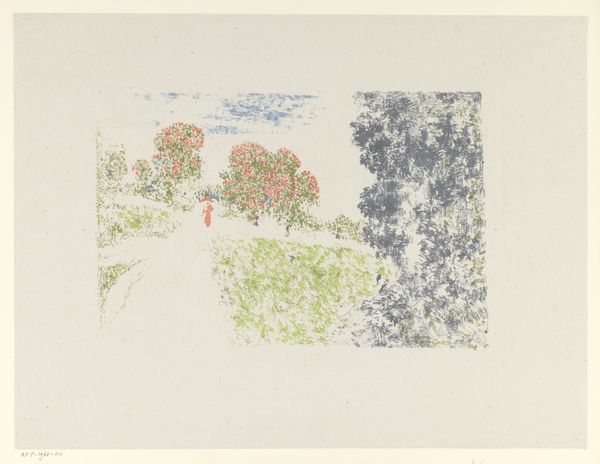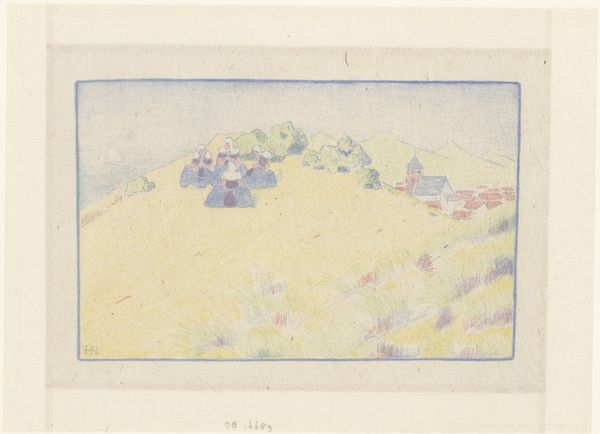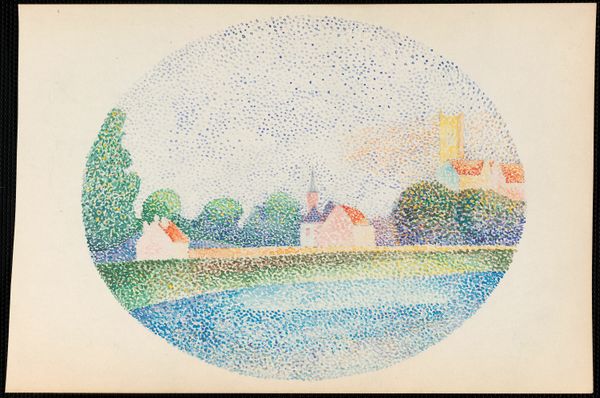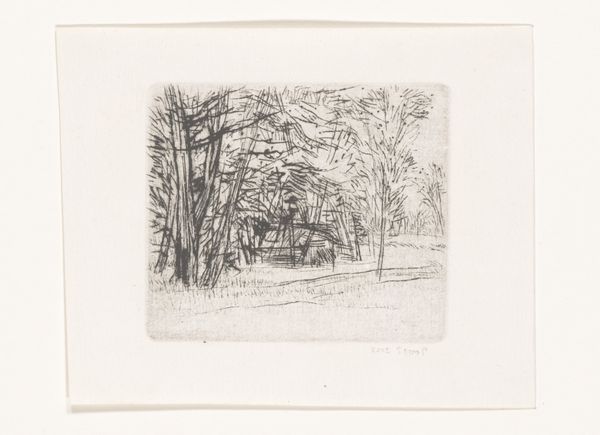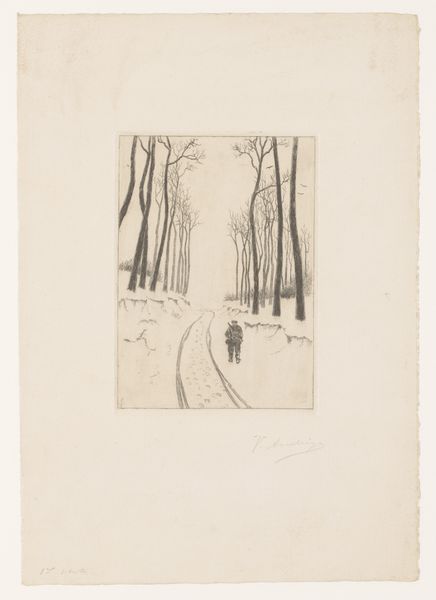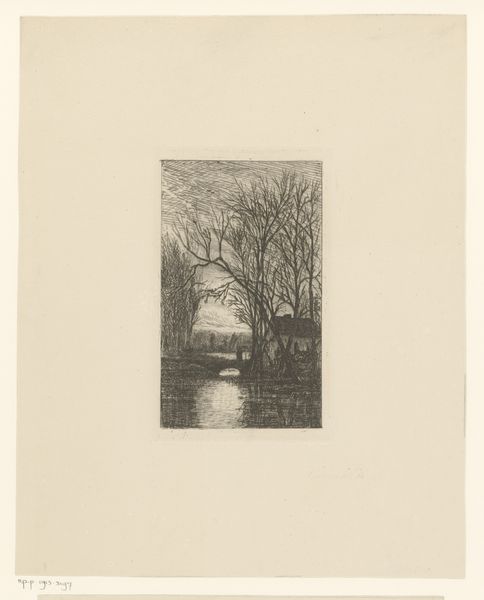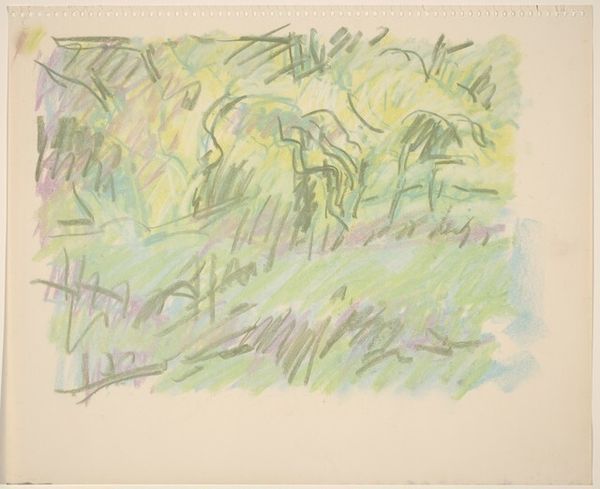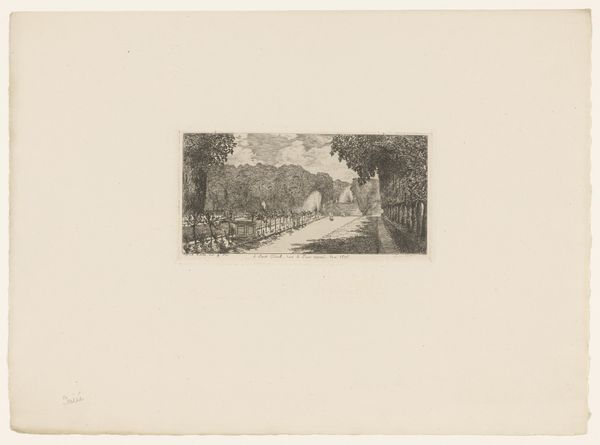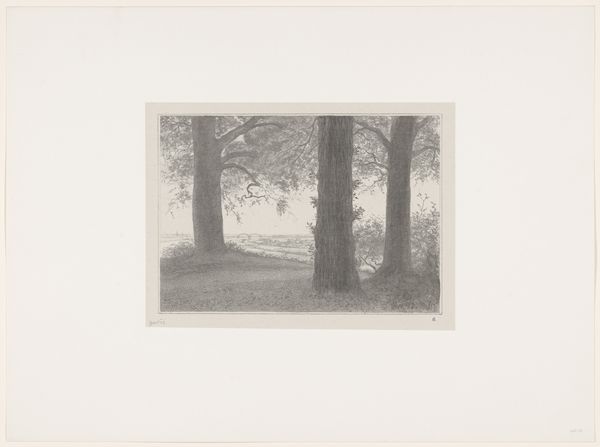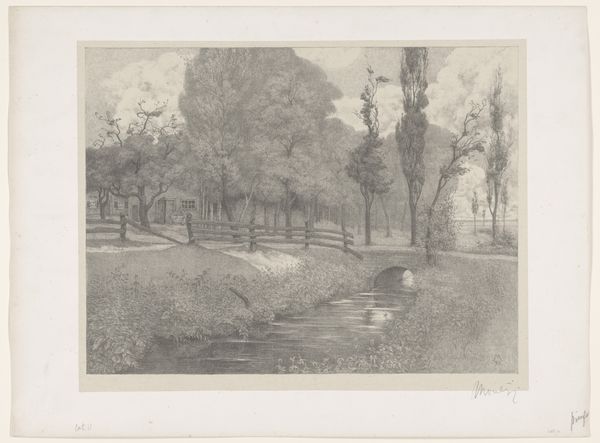
Dimensions: height 410 mm, width 533 mm
Copyright: Rijks Museum: Open Domain
Curator: Here we have Ker Xavier Roussel's "Landschap met huis," created around 1897. This watercolour print captures a pastoral scene, showcasing the artist's engagement with Impressionism and Post-Impressionism. Editor: My first impression is how gentle the scene is. The soft hues, the light strokes... It’s as if a memory is being gently coaxed onto paper. Almost ethereal. Curator: It is quite evocative, especially if we think of its time. This work invites us to consider the evolving notions of the idyllic landscape in late 19th-century Europe. It reflects anxieties related to industrialization and urbanization, the kind that affected the lives and labor conditions of the working class, as seen across impressionist depictions of suburban leisure. Editor: Yes, a yearning for simplicity is quite palpable. I find myself focusing on the way the building is sort of blended into the natural surroundings...Almost disappears behind those thin white trees. A symbol for a time where everything becomes part of something bigger? Curator: Absolutely. Roussel often engaged with classical and mythological themes, reflecting a nostalgic ideal of a harmonious past. Here, we see a simpler approach. It is tempting to read this integration of architecture and nature as a yearning for balance between human progress and the environment, a tension which relates to issues of class, property ownership and industrial sprawl of the era. Editor: It reminds me of old family photographs that have faded with time... the kind where the emotion conveyed outweighs clarity and the image seems to float free of definition. Did Roussel set out to capture an emotion instead of capturing details? Curator: It is quite possible, and it also reveals the art-for-art's-sake leanings that typified the post-impressionists. Think of it as reflecting on art as a product in a quickly changing economic ecosystem that included social reforms, organized labor and increased awareness of wealth inequality. Editor: This changes my perception. Initially I simply thought "peaceful," but now that has grown to be so much more. Curator: Indeed, art historical analysis reveals art’s inextricable links to broader social currents. It’s more than just pretty pictures; it’s about power, resistance, and longing. Editor: So, not just about what we see, but why we see it, what we're missing, and how it all relates to where we’ve been... Interesting!
Comments
No comments
Be the first to comment and join the conversation on the ultimate creative platform.

